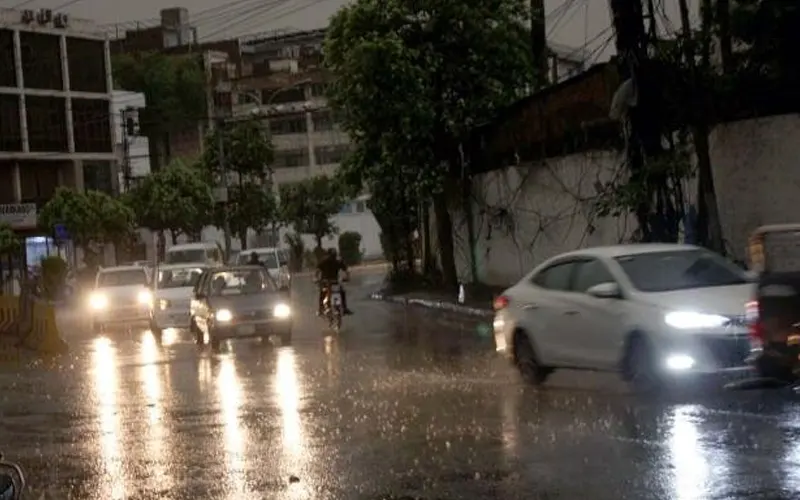Following the Pakistan Meteorological Department (PMD) heavy rain alert, the government of Sindh has activated its emergency plan in anticipation of heavy rainfall during the monsoon season across the province.
Sindh Minister Syed Murad Ali Shah chaired a high-level meeting to assess and enhance preparation for the upcoming monsoon season, stressing the need for full readiness of all concerned departments and institutions throughout the province.
Weather Forecast:
Weather forecasts indicate that a ‘heat-low’ pressure area is likely to form earlier than usual over southern Pakistan. Rainfall in July and August is expected to be normal to slightly above normal.
Upper Sindh may see a 10 percent increase in rainfall, while Southern Sindh could experience a rise of 20-30 percent. Flood management remains a top priority, particularly in the Lower Indus region, which faces high flood risks due to potential overflow from the Indus River and hill torrents.
To stay informed about current Karachi weather conditions, visit TOK Weather Page
To address these challenges, the chief minister has mobilized all relevant departments and organizations to upgrade drainage systems and ensure pumping stations are fully functional before the monsoon begins. Restoration work from the 2022 floods is also underway, with focus on strengthening critical infrastructure to improve the region’s resilience to future flooding.
Karachi Drains Cleaning:
The Chief Minister was informed that the drains cleaning operation in Karachi commenced on June 20, 2025, and will continue till September 15, 2025. All major choking points and culverts have already been cleared, as a part of this campaign.
Priority is being given to underpasses such as Tariq Road, KPT, Submarine and Mehran, while emergency response team remain on high alert across the city.
The city’s infrastructure is insufficient to manage rainfall abov 45 mm per hour, with blocked drains, particularly in District Korangi, caused by plastic waste and encroachment.
Solid Waste Management:
The Sindh Solid Waste Management Board (SSWMB) informed the CM that extra machinery and personnel are being deployed during rain emergencies, with staff equipped with rain gear and necessary tolls to handle water-related challenges efficiently.
A widespread awareness campaign is in progress to educate the public on precautionary steps during potential flooding. Meanwhile, the SSWMB is working to maintain continuous garbage collection and disposal sevices throughout this period.
Sindh Flood Control Measures:
The Irrigation Department has emphasized major flood management challenges in the Lower Indus region, which, being at the downstream end of the river system, experiences the highest flood levels, volumes and durations. Key flood sources include the Indus River, hill torrents, and heavy monsoon rainfall.
According to the seasonal outlook for 2025 prepared by the Pakistan Meteorological Department, it indicates that normal to above-normal rainfall in some regions may worsen flooding, especially in urban areas of Sindh, Punjab, AJK, and KP. Intense rainfall could trigger flash floods un hill torrent zones and major cities.
The Lower Indus Basin, which encompasses Manchhar Lake and Hamal Lake, functions as a key drainage catchment area. However, historical flood data shows that Manchhar Lake frequently lacks capacity to handle severe flooding.
To address water- logging and salinity issues, SCARP projects have been implemented, incorporating drainage systems designed to lower the water table and reduce surface soil salinity. As part of monsoon preparedness, multiple pumping stations across the region are fully operational, with emergency response measures in place, including drain de-silting and infrastructure repairs.
Following the 2022 floods, restoration efforts have concentrated on vital infrastructure such as embankment restoration and bridge repairs to strengthen resilience and support local economies. As the region gears up for the 2025 monsoon season, sustained investment in flood management infrastructure remains essential to reduce future risks.









